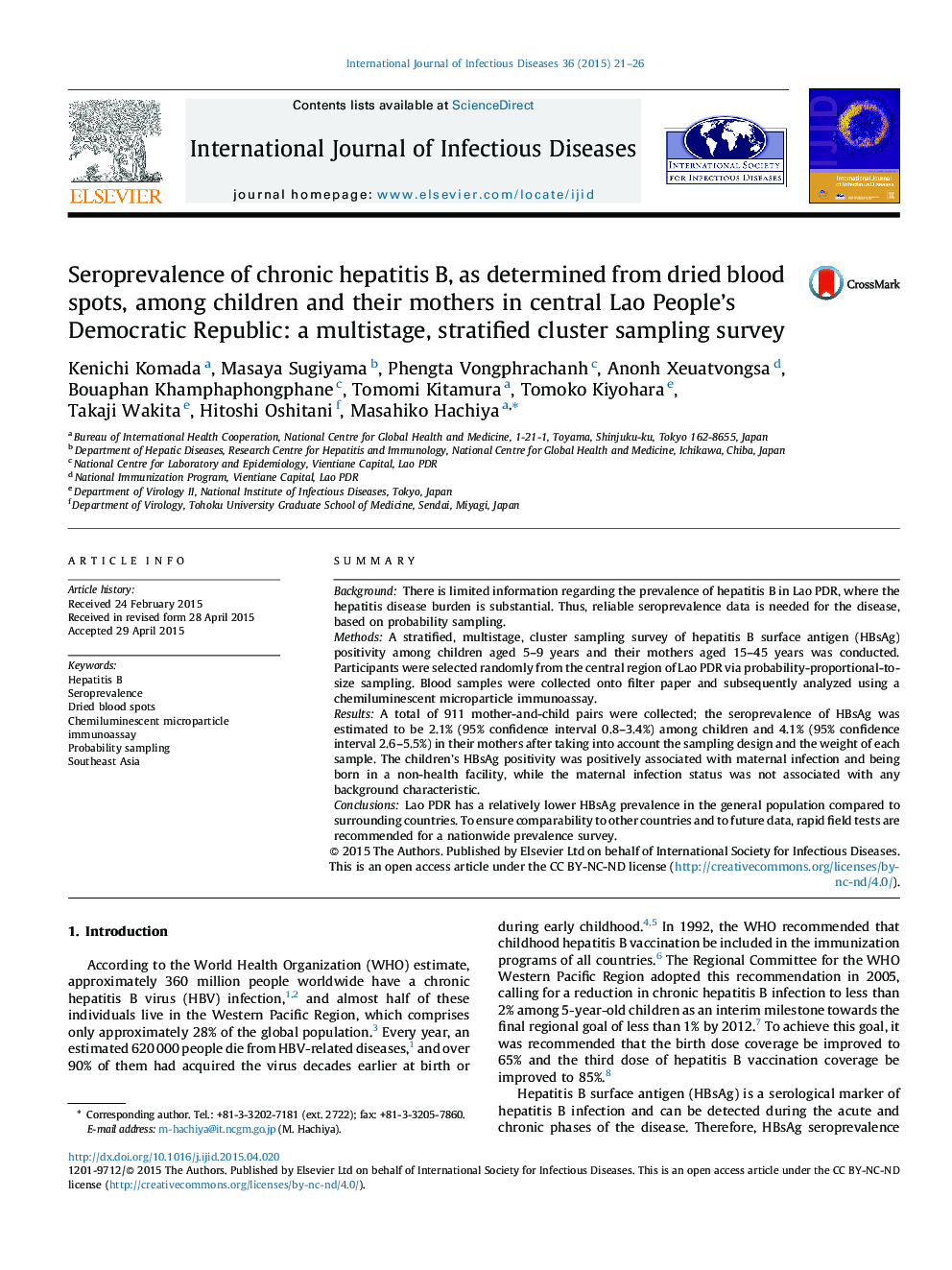| Article ID | Journal | Published Year | Pages | File Type |
|---|---|---|---|---|
| 3362254 | International Journal of Infectious Diseases | 2015 | 6 Pages |
•A multistage, cluster sampling survey was conducted successfully in Lao PDR.•Dried blood spots and chemiluminescent microparticle immunoassay was used.•Hepatitis B prevalence was lower than expected in children and mothers.•Widely used rapid test kits are recommended for a nationwide survey.
SummaryBackgroundThere is limited information regarding the prevalence of hepatitis B in Lao PDR, where the hepatitis disease burden is substantial. Thus, reliable seroprevalence data is needed for the disease, based on probability sampling.MethodsA stratified, multistage, cluster sampling survey of hepatitis B surface antigen (HBsAg) positivity among children aged 5–9 years and their mothers aged 15–45 years was conducted. Participants were selected randomly from the central region of Lao PDR via probability-proportional-to-size sampling. Blood samples were collected onto filter paper and subsequently analyzed using a chemiluminescent microparticle immunoassay.ResultsA total of 911 mother-and-child pairs were collected; the seroprevalence of HBsAg was estimated to be 2.1% (95% confidence interval 0.8–3.4%) among children and 4.1% (95% confidence interval 2.6–5.5%) in their mothers after taking into account the sampling design and the weight of each sample. The children's HBsAg positivity was positively associated with maternal infection and being born in a non-health facility, while the maternal infection status was not associated with any background characteristic.ConclusionsLao PDR has a relatively lower HBsAg prevalence in the general population compared to surrounding countries. To ensure comparability to other countries and to future data, rapid field tests are recommended for a nationwide prevalence survey.
